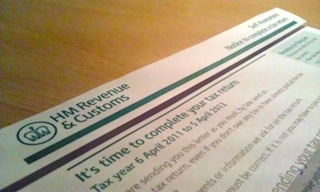6 Essential Accounting Terms for Small Businesses – Crunchers Accountants Edinburgh
Hiring an accountant is widely considered best practice for small business owners, and it goes without saying that at Crunchers, Accountants Edinburgh we would be happy to help you. But delegating financial analysis and reporting to accountants like us, shouldn’t mean completely checking out of the numbers process each month or quarter. On the contrary, it’s recommended that business owners work closely with their accountants throughout the year to better understand their financial position, and make smart plans for future growth.
Do you want to increase your accounting knowledge so you can have more informed, insightful discussions with your accountant this quarter?
Start right now, with this list of 6 essential accounting terms for small business owners.
-
Cash Flow
Do you have more cash flowing into your business each month than you pay out to cover costs and expenses? If so, your accountant will conclude that you’re “cash flow positive.” If the opposite is true, your cash flow statement will reveal that you’re “cash flow negative.”
Having excess cash on hand means you’re better equipped to keep up with debt, cover unforeseen expenses, and invest in growth opportunities. Your accountant will generate a cash flow statement each quarter to keep tabs on this key performance indicator.
Remember a sale isn’t worth anything unless you get the cash!
-
Profit and Loss Account
The profit and loss account (also known as the P&L) is one of the most important documents used by accountants to determine the profitability of your business.
The P&L statement lists revenues and gains as well as expenses and losses over a specific period of time (typically every three months for small businesses). It calculates your all important “bottom line” so you know if you’re operating at a loss or turning a profit. As xero certified accountants, and cloud accounting specialists, one of the advantages of using cloud accounting software is that you have real time accounting information, and can run your Profit and Loss Account as often as you want. No more having to wait for your accountant to come back to you with the numbers.
-
Gross vs Net Profit
Gross profit is what remains when you subtract the cost of goods sold (COGS) from your total revenue. Net profit, on the other hand, drills deeper. It reveals your exact pound per profit of sales after subtracting all operating expenses, including COGS, taxes, interest paid on debt, etc.
Gross and net profit are both profitability ratios. They are key for measuring business performance against an industry benchmark and your competitors.
-
Balance Sheet
The balance sheet offers a snapshot of your overall financial position at a particular moment in time. It lists the assets (such as cash, stock / inventory, accounts receivable, and equipment); liabilities (like accounts payable, income tax, and employee salaries); and shareholder capital. In a nutshell, the balance sheet shows what you own, as well as what you owe.
-
Accounts Receivable & Accounts Payable
Simply put, accounts receivable is money your business is owed by customers for goods or services sold. It is considered an asset on your balance sheet. Conversely, accounts payable is money you owe suppliers and any bills you have yet to pay, so it’s listed as a liability on your balance sheet. Again a sale isn’t worth anything unless you collect the money! Cloud accounting software will allow you to run Accounts Receivable and payable reports, showing not only the outstanding amounts, but it will also show you the age of the debtor, and creditors. If you see the numbers moving to the right, into the older columns, then you may have an issue that requires further investigation.
-
Bad Debts
Bad debt happens when you can’t collect payment from your customers. Long term outstanding accounts receivable could be listed on your balance sheet as “bad debts”, and if they’re never collected, may have to be written off as a loss. If you do have to write the debt off, then you will get a tax deduction for the amount, only if it is a specific bad debt. For those debts that are potentially not going to get paid, you can set up a general provision to cover them, but you won’t get a tax deduction for it within the accounts.
Summary
And there you have it – six key terms to help you build your accounting vocabulary, join the conversation, and empower smarter decision-making. All business owners should know the basic business numbers, however at Crunchers Accountants Edinburgh, we concentrate on the numbers that drive the financials. We can help the business owner not only understand the financials, but also help them gain an understanding on what drives the numbers. By concentrating on the drivers the business owner can then push the business forward to the next level. If we can help in any way, then please let us know.
Crunchers – Accountants Edinburgh
© Photo Credit Laineys Repertoire


